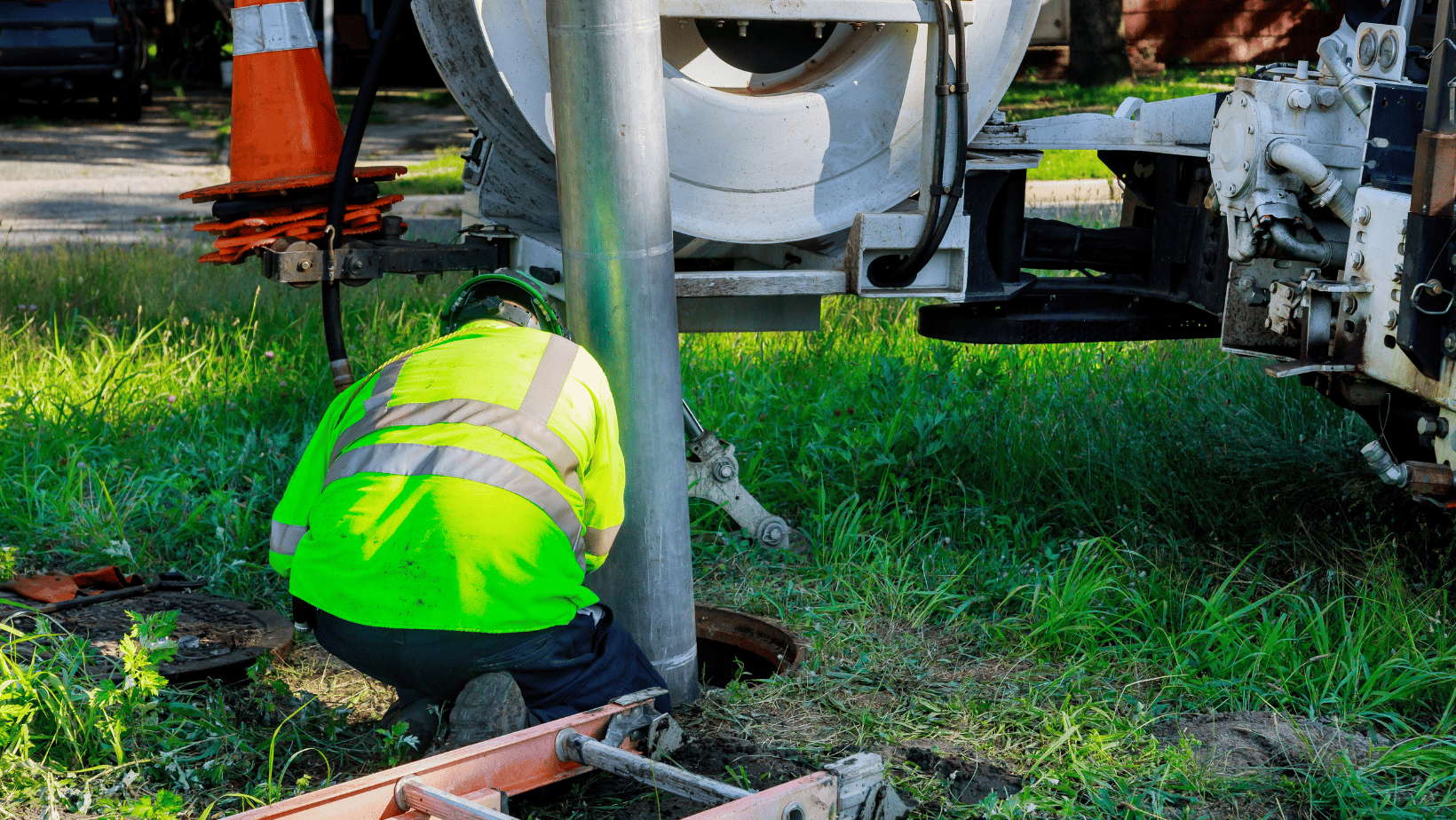
20 Aug Everything You Need to Know about Sewer Line Cleaning
You probably only think about your sewer lines when there’s a problem. However, many property owners are surprised that they may be responsible for the sewer line that runs near and under their property. Regular sewer line maintenance, like sewer line cleaning, can prevent clogged drains, blockages, and overflows, which will help you avoid costly repairs. Learn what sewer line cleaning involves and the process.
What Is Sewer Line Cleaning?
Sewer line cleaning removes leaves, grease, sludge, trash, and other debris from the pipes and drains of the sewer system. Professionals accomplish this cleaning through several methods, described in more depth below:
- Mechanical cleaning: This work involves scraping, cutting, and removing debris from a sewer line.
- Chemical cleaning: This technique involves chemicals and industrial cleaners to dissolve the residue.
- Hydraulic cleaning: Technicians push high-pressure water through the sewer line system to clear debris.
- Snake cleaning: A plumbing augmenter known as a drain snake unclogs debris from a sewer line in this process.
- Airburst cleaning: In this technique, sewer line cleaning specialists push accelerated or high-pressured gas through the system to clear debris.
What Is the Process of Sewer Line Cleaning?
The method of cleaning will determine the sewer line cleaning process. However, sewer line cleaning always begins with an inspection regardless of the method. Most professional cleaners use a camera to inspect the sewer line. Video or camera inspection involves identifying an entry point to the sewer line and guiding a robotic snake or drone through your sewer system to identify the obstruction or problem.
Upon identification, the cleaning personnel will determine the most appropriate method based on various factors, including the obstruction or problem, the cleaner’s specialty and equipment, and your budget.
Mechanical cleaning
Primarily used to clear blockages and obstructions, mechanical cleaning involves equipment and tools like power rodders that pull, push, tear or cut debris from the sewer line.
Chemical cleaning
During chemical cleaning, cleaners push solid or liquid chemicals or industrial cleaners through or poured into the sewer line. As the substances travel through the sewer line, they dissolve debris and organic matter.
Hydraulic cleaning
The hydraulic cleaning process involves inserting a high-pressure hose and pumping a high-pressure stream of water into the sewer line. The pressure can go up to 4,000 psi (pounds per square inch, a standard measurement of pressure), enough to dislodge most debris from the line.
Snake cleaning
During snake cleaning, a technician snakes an augmenter through the sewer line. As the augmenter pushes through, the augmenter is turned or cranked, creating a corkscrew-like action that dislodges and loosens debris in the line.
Airburst cleaning
Like hydraulic cleaning, airburst cleaning involves high-pressure cleaning with gas. The hose pumps high-pressure gas into the sewer line to dislodge the debris.
PROS Services cleaners are licensed, extensively trained, and insured to provide various industrial, environmental, and emergency response cleaning services. Servicing Michigan for more than 50 years, PROS Services believes no job is too complex. Contact us online or call 810-982-7271 to discuss your industrial cleaning needs.

